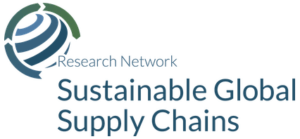The Green and Digital Transition in Manufacturing Global Value Chains in Latecomer Countries
Rasmus Lema and Roberta Rabellotti
2023
#Environment and climate change
#Sustainability standards
This paper is based on a review of the literature that brings together GVCs, green and digital transformations. Or to be more precise, the analysis is based on three main components: (a) the greening of GVCs and environmental upgrading; (b) the digital transformation of manufacturing GVCs and (c) an initial exploration of the green and digital joint transformations in GVCs. The aim is to provide a framework bringing together environmental upgrading and digital technologies in manufacturing GVCs. We find that the greening of the global value chains in manufacturing industries unfold in analytically separable steps: a) new patterns of demand preferences and consumer behaviours, b) new green strategies by lead firms and global buyers and c) enforcement of environmental standards and associated patterns of upgrading and downgrading across global supply bases. Digitalization in manufacturing GVCs have differentiated effects across the Global South. The importation and adoption of advanced digital technologies is still limited to a small number of countries (the so-called emerging economies) and their production at any scale is limited to an even smaller set of advanced economies plus China. Across most of the Global South, adoption rates of smart manufacturing and service technologies as well new technologies for data processing and analysis are very low and many firms still face challenges with adopting much older manufacturing and service technologies. Still very little is known about the extent to which key enabling digital technologies support the process of environmental upgrading in the Global South firms that are inserted into GVCs. This is because these techno-institutional waves are still concentrated geographically and the full extent of the ramifications across the Global South remains to be seen. This also means that synergy-creation is challenging. The small pool of literature identified for this study suggests that potentials are mainly limited to certain digital technologies and specific types of environmental upgrading. These insights are anyhow useful because they may help to early direct the efforts of policymakers towards the more likely opportunities.


